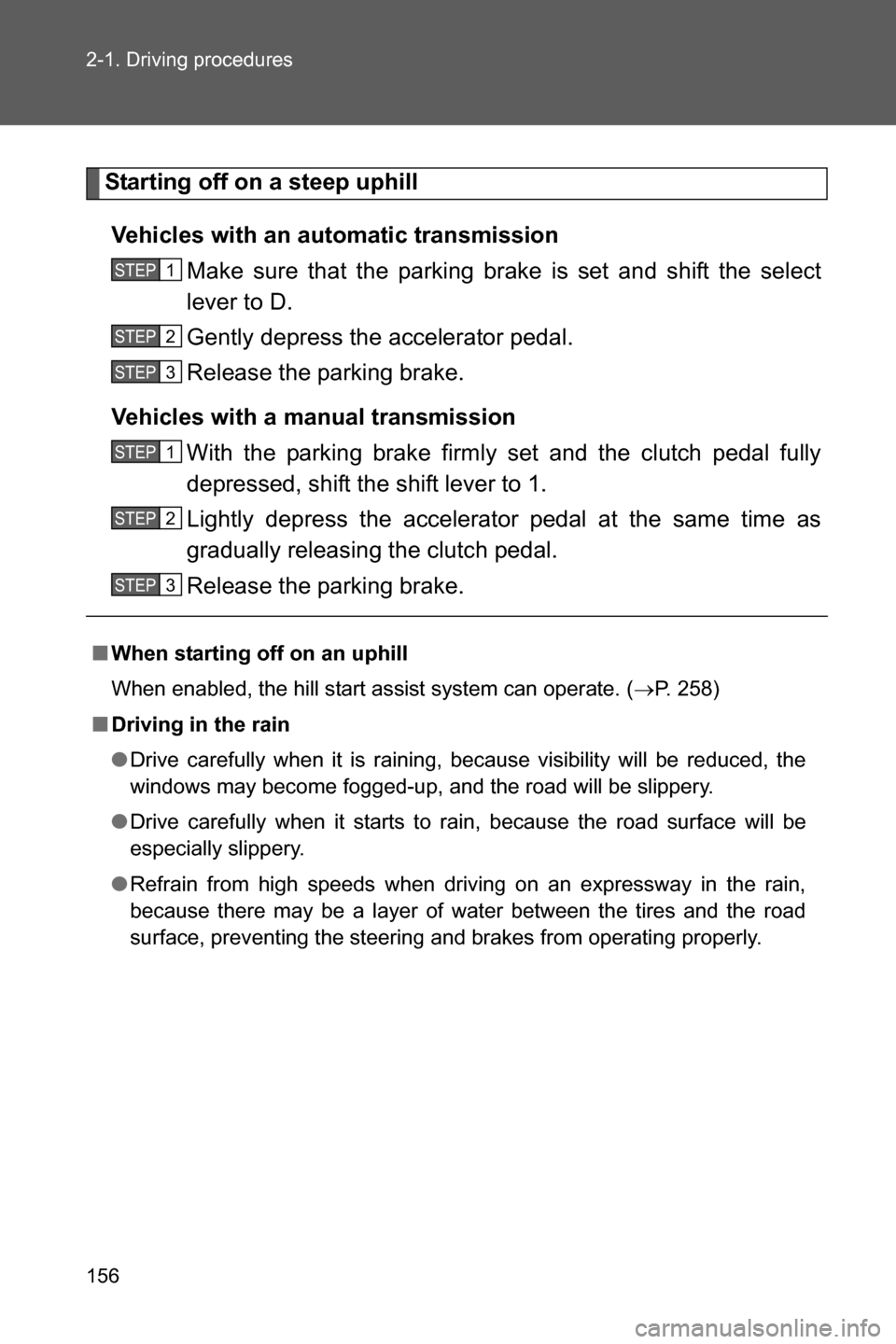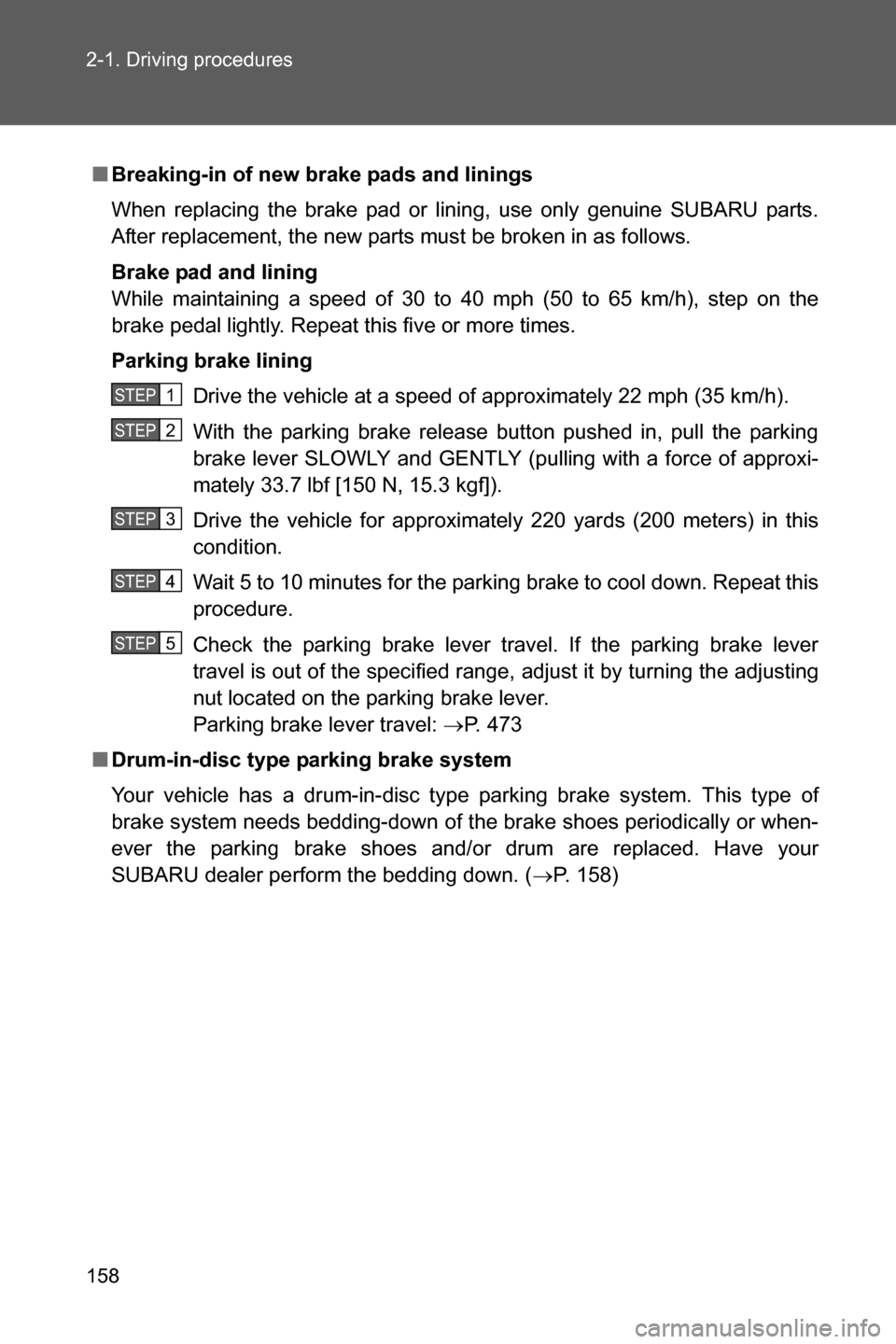2017 SUBARU BRZ light
[x] Cancel search: lightPage 134 of 540

132 1-7. Safety information
■Child*5, *7
■Unoccupied
■There is a malfunction in the system
Indicator/
warning light“AIR BAG ON” and “AIR BAG OFF”
indicator lights“AIR BAG
OFF” or “AIR
BAG ON”*5
SRS airbag system warning light Off
Front passenger’s seatbelt reminder lightOff or
flashing
*3, *5
DevicesFront passenger airbag Off or on
*5
Front side airbag*4
On
Front curtain airbag*4
Front passenger’s seatbelt pretensioner*4
Indicator/
warning light“AIR BAG ON” and “AIR BAG OFF”
indicator lights“AIR BAG
OFF”
SRS airbag system warning light
Off
Front passenger’s seatbelt reminder light
DevicesFront passenger airbag Off
Front side airbag
*4
On
Front curtain airbag*4
Front passenger’s seatbelt pretensioner*4
Indicator/
warning light“AIR BAG ON” and “AIR BAG OFF”
indicator lights“AIR BAG
OFF”
SRS airbag system warning light On
Front passenger’s seatbelt reminder light Off
DevicesFront passenger airbag Off
Front side airbag
*4
On
Front curtain airbag*4
Front passenger’s seatbelt pretensioner*4
Page 139 of 540

137 1-7. Safety information
1
Before driving
WARNING
■Front passenger occupant detection system precautions
Observe the following precautions regarding front passenger occupant
detection system.
Failure to do so may cause the occupant detection system to not function
correctly, resulting in death or serious injury.
●Wear the seatbelt properly.
●Do not apply excessive force to the seat.
●Do not put sharp object(s) on the seat or pierce the seat upholstery.
●Do not put objects under the front passenger seat.
●Do not use a seat accessory, such as a cushion or seat cover, that covers
the seat cushion surface.
●Do not spill liquid on the front passenger seat. If liquid is spilled, wipe it off
immediately and dry the seat. If the airbag warning light illuminates, dry
the seat until the warning light turns off. If the airbag warning light stays on
even when the seat has dried, do not allow anyone to sit on the front pas-
senger seat and have the system checked by your SUBARU dealer. If the
airbag warning light does not illuminate, check that the airbag ON/OFF
indicator light works properly. If the indicator light does not work properly,
do not allow anyone to sit in the front passenger’s seat and have the sys-
tem inspected by your SUBARU dealer.
●Do not remove or disassemble the front passenger seat. Also, do not
replace or modify the seat upholstery or foam inside the seat.
●Do not install any accessory (such as an audio amplifier) other than a gen-
uine SUBARU accessory under the front passenger’s seat.
●Do not place a magnetized items near the seatbelt buckle.
Page 143 of 540

141 1-7. Safety information
1
Before driving
●Front passenger’s seat
Do not install a child restraint system (including a booster cushion) due to
the hazard to children posed by the passenger’s airbag.
●Rear seat seating positions
Recommended installing positions for the child restraint systems.
In these positions, the following equipment is provided for installing a child
restraint system.
• Automatic/Emergency Locking Retractor (ALR/ELR) seatbelts
• ISOFIX anchor bars
• Top tether anchorages
Some types of child restraints might not be able to be secured firmly due to
projection of the seat cushion.
In this seating position, you should use only a child restraint system that
has a bottom base that fits snugly against the contours of the seat cushion
and can be securely retained using the seatbelt.
WARNING
■Child restraint precautions
●For effective protection in automobile accidents and sudden stops, a child
must be properly restrained, using a seatbelt or child restraint system
depending on the age and size of the child. Holding a child in your arms is
not a substitute for a child restraint system. In an accident, the child can be
crushed against the windshield, or between you and the vehicle's interior.
●SUBARU strongly urges the use of a proper child restraint system that
conforms to the size of the child, installed on the rear seat. According to
accident statistics, the child is safer when properly restrained in the rear
seat than in the front seat.
●Never install a rear-facing child restraint system on the front passenger
seat even if the “AIR BAG OFF” indicator light is illuminated. In the event
of an accident, the force of the rapid inflation of the front passenger airbag
can cause death or serious injury to the child if the rear-facing child
restraint system is installed on the front passenger seat.
Page 155 of 540

When driving2
153
2-1. Driving procedures
Driving the vehicle............ 154
Push-button ignition
switch ............................. 169
Engine (ignition)
switch ............................. 178
Automatic
transmission................... 181
Manual Transmission ....... 188
Turn signal lever .............. 191
Parking brake ................... 192
Horn ................................. 193
2-2. Instrument cluster
Gauges and meters ......... 194
Indicators and warning
lights .............................. 198
Multi-information display
(monochrome
display) .......................... 205
Multi-information display
(color display) ................ 213
2-3. Operating the lights and
windshield wipers
Headlight switch ............... 228
Fog light switch ................ 233Windshield wipers
and washer .................... 234
2-4. Using other driving
systems
Cruise control ................... 237
Rear view camera ............ 242
Driving assist systems ..... 251
Hill start assist .................. 258
2-5. Driving information
Cargo and luggage .......... 263
Vehicle load limits ............ 267
Winter driving tips ............ 268
Trailer towing ................... 273
Dinghy towing .................. 274
Page 158 of 540

156 2-1. Driving procedures
Starting off on a steep uphill
Vehicles with an automatic transmission
Make sure that the parking brake is set and shift the select
lever to D.
Gently depress the accelerator pedal.
Release the parking brake.
Vehicles with a manual transmission
With the parking brake firmly set and the clutch pedal fully
depressed, shift the shift lever to 1.
Lightly depress the accelerator pedal at the same time as
gradually releasing the clutch pedal.
Release the parking brake.
■When starting off on an uphill
When enabled, the hill start assist system can operate. (�oP. 258)
■Driving in the rain
●Drive carefully when it is raining, because visibility will be reduced, the
windows may become fogged-up, and the road will be slippery.
●Drive carefully when it starts to rain, because the road surface will be
especially slippery.
●Refrain from high speeds when driving on an expressway in the rain,
because there may be a layer of water between the tires and the road
surface, preventing the steering and brakes from operating properly.
STEP 1
STEP 2
STEP 3
STEP 1
STEP 2
STEP 3
Page 160 of 540

158 2-1. Driving procedures
■Breaking-in of new brake pads and linings
When replacing the brake pad or lining, use only genuine SUBARU parts.
After replacement, the new parts must be broken in as follows.
Brake pad and lining
While maintaining a speed of 30 to 40 mph (50 to 65 km/h), step on the
brake pedal lightly. Repeat this five or more times.
Parking brake lining
Drive the vehicle at a speed of approximately 22 mph (35 km/h).
With the parking brake release button pushed in, pull the parking
brake lever SLOWLY and GENTLY (pulling with a force of approxi-
mately 33.7 lbf [150 N, 15.3 kgf]).
Drive the vehicle for approximately 220 yards (200 meters) in this
condition.
Wait 5 to 10 minutes for the parking brake to cool down. Repeat this
procedure.
Check the parking brake lever travel. If the parking brake lever
travel is out of the specified range, adjust it by turning the adjusting
nut located on the parking brake lever.
Parking brake lever travel: �oP. 473
■Drum-in-disc type parking brake system
Your vehicle has a drum-in-disc type parking brake system. This type of
brake system needs bedding-down of the brake shoes periodically or when-
ever the parking brake shoes and/or drum are replaced. Have your
SUBARU dealer perform the bedding down. (�oP. 158)
STEP 1
STEP 2
STEP 3
STEP 4
STEP 5
Page 162 of 540

160 2-1. Driving procedures
WARNING
■When driving the vehicle
●Do not drive if you are unfamiliar with the location of the brake and accel-
erator pedals to avoid depressing the wrong pedal.
• Accidentally depressing the accelerator pedal instead of the brake
pedal will result in sudden acceleration that may lead to an accident
that could result in death or serious injury.
• When backing up, you may twist your body around, leading to a diffi-
culty in operating the pedals. Make sure to operate the pedals properly.
• Make sure to keep a correct driving posture even when moving the
vehicle only slightly. This allows you to depress the brake and acceler-
ator pedals properly.
• Depress the brake pedal using your right foot. Depressing the brake
pedal using your left foot may delay response in an emergency, result-
ing in an accident.
●Do not drive the vehicle over or stop the vehicle near flammable materials.
The exhaust system and exhaust gases can be extremely hot. These hot
parts may cause a fire if there is any flammable material nearby.
●On vehicles with an automatic transmission, do not let the vehicle roll
backward while the select lever is in a driving position, or roll forward while
the select lever is in R.
Doing so may cause the engine to stall or lead to poor brake and steering
performance, resulting in an accident or damage to the vehicle.
●If the smell of exhaust is noticed inside the vehicle, open the windows and
check that the trunk lid is closed. Large amounts of exhaust in the vehicle
can cause driver drowsiness and an accident, resulting in death or a seri-
ous health hazard. Have the vehicle inspected by your SUBARU dealer
immediately.
●On vehicles with a manual transmission, do not shift the shift lever to R
while the vehicle is moving forward.
Doing so can damage the transmission and may result in a loss of vehicle
control.
●Do not shift the select lever to a driving position while the vehicle is moving
backward.
Doing so can damage the transmission and may result in a loss of vehicle
control.
Page 164 of 540

162 2-1. Driving procedures
WARNING
■When driving on slippery road surfaces
●Sudden braking, acceleration and steering may cause tire slippage and
reduce your ability to control the vehicle, resulting in an accident.
●Sudden acceleration, engine braking due to shifting, or changes in engine
speed could cause the vehicle to skid, resulting in an accident.
●After driving through a puddle, lightly depress the brake pedal to make
sure that the brakes are functioning properly. Wet brake pads may prevent
the brakes from functioning properly. If the brakes on only one side are wet
and not functioning properly, steering control may be affected, resulting in
an accident.
■When shifting the select lever or shift lever
●On vehicles with an automatic transmission, be careful not to shift the
select lever with the accelerator pedal depressed. Shifting the select lever
to a gear other than P or N may lead to unexpected rapid acceleration of
the vehicle that may cause an accident and result in death or serious
injury.
●Do not place items in the select lever’s or shift lever’s surrounding area. It
may cause incorrect operation.
●If the select lever’s or shift lever’s boot is pulled out during cleaning, return
it to its previous position. If the select lever’s or shift lever’s boot is left
pulled out, the select lever or shift lever may become difficult to operate.
■If you hear a squealing or scraping noise (brake pad wear limit indica-
tors)
Have your SUBARU dealer check and replace the brake pads as soon as
possible.
Rotor damage may result if the pads are not replaced when needed.
It is dangerous to drive the vehicle when the wear limits of the brake pads
and/or those of the brake discs are exceeded. (�oP. 1 5 7 )
■Breaking-in of new brake pads and linings
A safe location and situation should be selected for break-in driving.